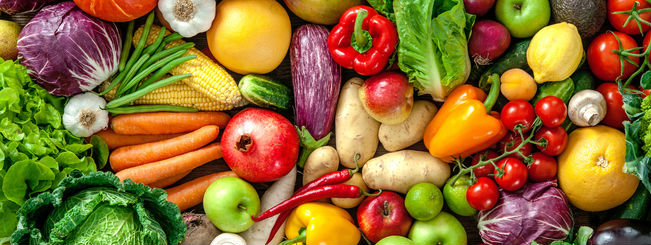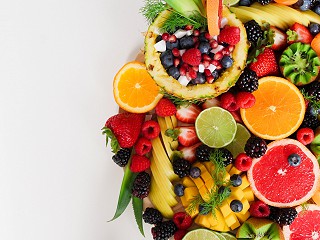
The Health Benefits of Vegetables and Fruits
Plants bearing vegetables and fruits have a lot of work to do. Each day, they must take sunshine, nutrients from the soil, the air’s carbon dioxide and turn it all into something you’d like to bite into. While the plant is hard at work making a vegetable or fruit, it has to fight off fungi, bugs, and somehow avoid a sunburn. To pull off this feat the plant produces various chemicals. Some of these chemicals are the vitamins we all need. Other chemicals, made by the plant for self-defense, are called phytonutrients. These phytonutrients are often colorful, concentrated in the outer layers of the vegetable or fruit, and have a strong flavor. In fact, this is why wild plants are often smaller, less sweet and more bitter than the garden variety.
Think of the difference between a crab apple and a grocery store apple, or a wild strawberry compared to farmed strawberries. They are different because the wild plant had to put more energy into its chemical defenses rather than growing bigger and sweeter. This also explains why organic produce has a higher nutrient content. It’s because the organically raised plants had to fight their own battles and, in the process they create more nutritious food for us.
Many of these phytonutrients are health promoting in humans, but the way they do this is surprising. Take the case of glucosinolates. These are the class of compounds behind the spicy flavor of radishes and a few other vegetables. The vegetables don’t make the glucosinolate compounds for our gustatory pleasure, rather they are produced by the plant for pest control. And, if we were the size of aphids, eating some radish could be fatally toxic. However, since we are much bigger than insects these plant phytochemicals are, typically, not powerful enough to cause harm but they do stimulate our cell defenses. This is where much of the healthful effects of vegetables, fruits, herbs, and spices come from. By being strong enough to stimulate our own antioxidant systems at the cellular level but not strong enough, or consumed in large enough amounts, to be toxic. This benefit can be especially important in the areas of our body where energy use is always very high and oxidative damage is always a risk. These areas include the heart, the liver, and the brain.
Anthocyanins are another good phytonutrient example. Anthocyanins are a family of phytonutrients found in many red, blue, and purple fruits and vegetables; for example, blueberries.
If you would like to take advantage of these phytonutrients there a few things to consider when loading up your dinner plate. Fruits and tubers can be great sources of phytonutrients but be sure to take their sugar content into consideration. As a rule, vegetables that grow above ground are pretty much always low in sugar. Another general rule is this: colorful and strongly flavored produce is high in phytonutrients. Take the blues and reds of berries or the orange of carrots as examples. As for strong flavor, consider the radishes mentioned above. Onions, mustard seed or peppers also have strong flavors which they owe to their phytonutrients.
SOURCES
Son TG, Camandola S, Mattson MP. Hormetic Dietary Phytochemicals. Neuromolecular medicine. 2008;10(4):236-246. doi:10.1007/s12017-008-8037-y.
Yuni Choi et al. Vegetable Intake, But Not Fruit Intake, Is Associated with a Reduction in the Risk of Cancer Incidence and Mortality in Middle-Aged Korean MenJ. Nutr. 2015 145: 6 1249-1255; first published online April 15, 2015. doi:10.3945/jn.114.209437 -data-report-2012-final.pdf



